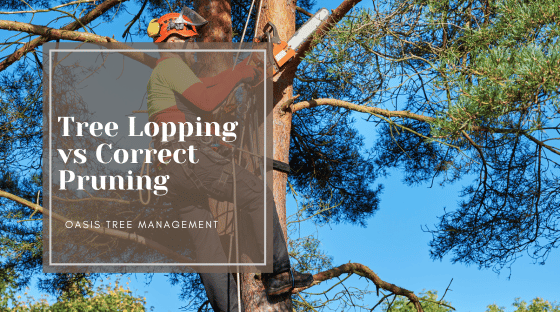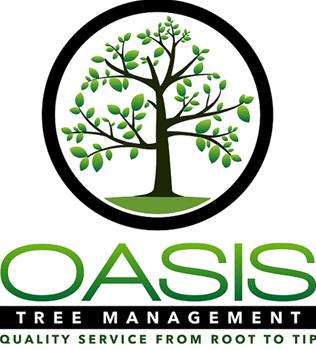
When it comes to maintaining trees, two common practices are often used – tree lopping and correct pruning. While both methods involve trimming branches and foliage, they differ significantly in approach, objectives, and long-term consequences. In this blog, we will explore the crucial differences between tree lopping and correct pruning, shedding light on the importance of proper tree care for the health and longevity of our trees.
When searching for tree removal or pruning in Brisbane, our client’s often search for tree lopping. This is only because the difference between lopping and correct pruning isn’t widely known (unless you are in arboriculture industry).
Oasis Tree Management suggests finding an Arborist to carry out any tree maintenance services you may need to ensure that correct methods are used.
The difference between tree lopping and correct tree pruning?
Tree Lopping
Tree lopping, also known as tree topping, is a practice where large sections of a tree’s crown are indiscriminately removed, often leaving stubs or lateral branches without considering the tree’s natural growth patterns. This aggressive method is usually done for convenience or to reduce the size of a tree quickly. However, tree lopping can have serious negative impacts on the tree’s health and structural integrity.
Correct Pruning
Correct pruning, on the other hand, is a carefully planned and precise technique aimed at removing specific branches to enhance the tree’s health, appearance, and safety. Professional arborists apply knowledge of tree biology and growth patterns to make strategic cuts that promote healthy regrowth and maintain the tree’s natural form. Correct pruning prioritises the long-term well-being of the tree.
Objectives and Outcomes of either method
Tree lopping is often done with short-term objectives in mind, such as reducing shade or addressing perceived hazards quickly. However, the consequences of lopping can be detrimental. It weakens the tree’s structure, encourages regrowth of weak, fast-growing branches, and exposes the tree to potential diseases and pests. Correct pruning, on the other hand, aims to remove dead or diseased wood, shape the tree for better aesthetics, and maintain proper clearance for structures and power lines, all while ensuring the tree’s health and stability.
Impact on Tree Health
Tree lopping inflicts wounds on the tree, leaving it susceptible to decay and infection. The large, open wounds take longer to heal, and the tree may struggle to compartmentalise the damage, leading to further decay. Conversely, correct pruning cuts are made near the branch collar, where the tree’s natural defences are strongest. This allows for faster healing and reduces the risk of infections, promoting the tree’s overall health.
Long-Term Consequences
Tree lopping often results in structurally weak trees that are prone to breakage during storms or high winds. Such trees can become hazards. Correct pruning, however, encourages the development of strong, well-attached branches, ensuring the tree remains resilient to environmental challenges.
An Arborist’s Role
Tree lopping is frequently performed by untrained individuals or companies without a proper understanding of tree biology and care. On the other hand, correct pruning is a task best left to certified arborists who have the knowledge, experience, and equipment to make informed decisions and execute precise cuts for the tree’s benefit.
In conclusion, the differences between tree lopping and correct pruning are vast and have lasting impacts on the health and safety of trees. While tree lopping may appear to be a quick fix, it can lead to irreparable harm and even the loss of a tree. Correct pruning, on the other hand, ensures that trees are cared for properly, allowing them to thrive and provide their countless benefits for years to come.
At the end of the day you are able to prune your trees how you like, but knowing the different methods can assist in your decision making. If you are searching for tree lopping in Brisbane, contact Oasis today for a free assessment where we can advise on the route to take in managing your trees.

Recent Comments